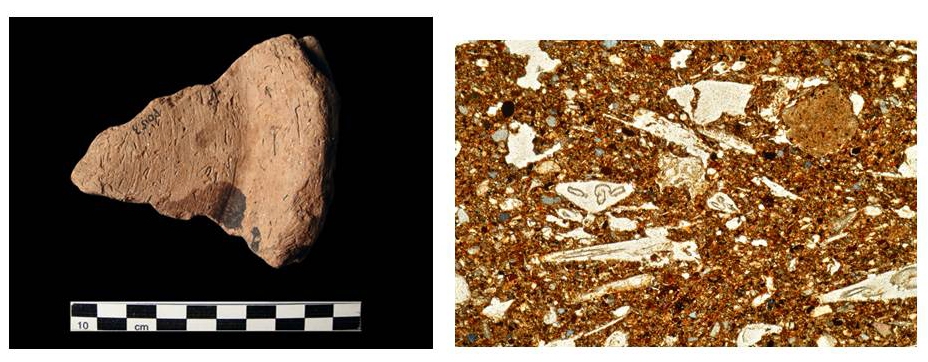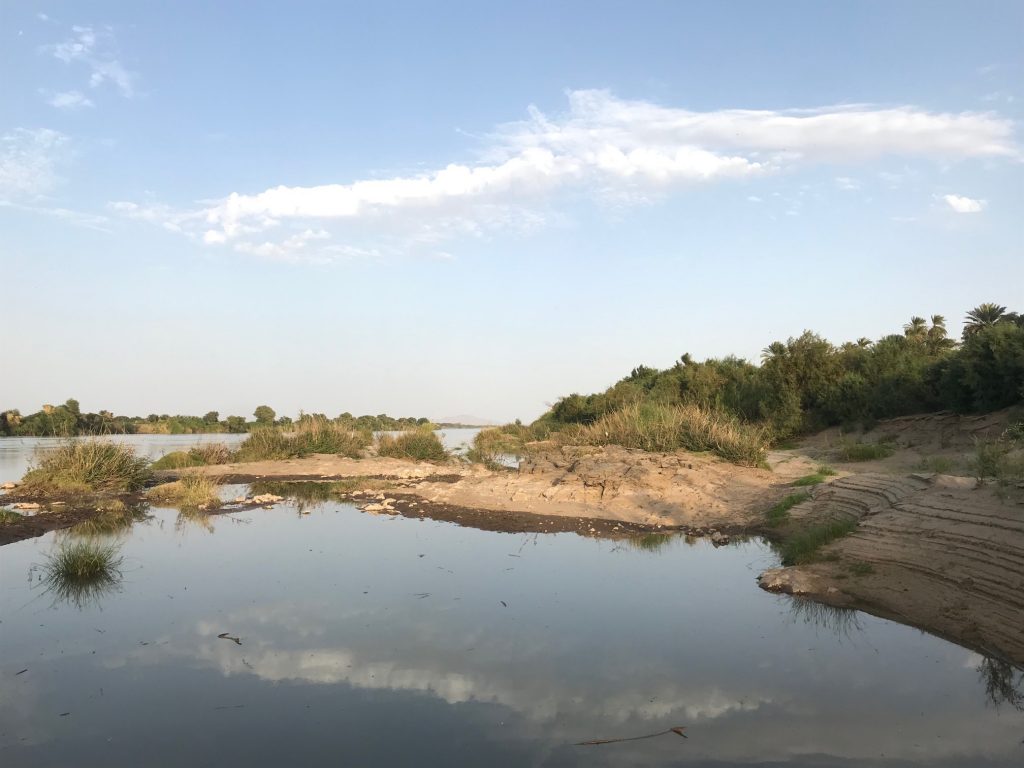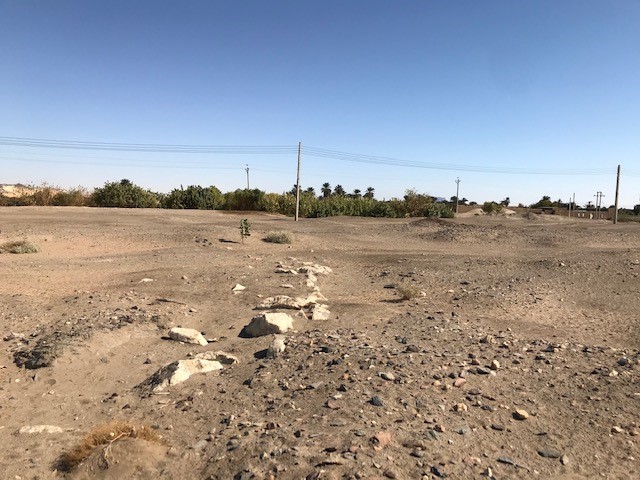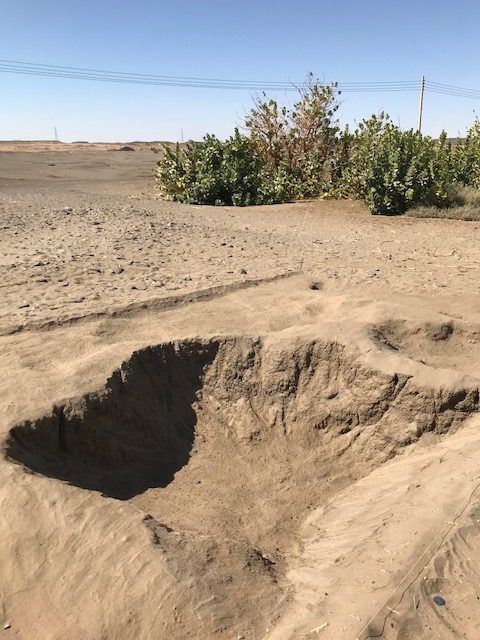Time passes by for everyone. Also, and above all for archaeologists. Still, it is pleasant when this comes with experience and new opportunities.
On February 2013 I wrote my first post for the AcrossBorders blog. At that time, I was sitting in the magazine rooms of the Sai Island excavation house starting to get familiar with the Nubian fabrics of the New Kingdom town. A few months later I moved to Vienna to join the ERC Starting Grant ‘AcrossBorders’ project led by Julia Budka.
Since then, hundreds of ceramic samples have passed through my hands. These were both Nubian-style and Egyptian-style vessels locally produced at Sai Island / Upper Nubia, but also Imported Nile clays, Marl clays and Oasis clays from Egypt, together with other imported wares from Levant. These materials constituted the aim of my research for AcrossBorders and were sampled, documented and analysed by me together with Johannes Sterba, at the Atominstitut of Vienna. Over the years, thanks to Julia Budka, I have learned how to recognize and classify these wares and fabrics and we calibrated together on them the different analytical strategies and research objectives. Now I fairly know each of those samples by heart.
Yet, we do not grow where things are easy, we grow when we face challenges (and new opportunities).
With October, I happily started in Munich a new three-year contract within Julia Budka’s ERC Consolidator Grant project ‘Diverse Nile’, where I am, together with other researchers and Julia Budka, responsible for the Work Package 3: Reconstructing cultural encounters based on the material culture. My main tasks within WP 3 include petrographic technological and compositional analyses on the ceramic materials sampled from the new concession area in the Attab to Ferka region, dating to the Bronze Age.
Emphasis will lay on pottery technology and mostly on the so-called hybrid products and their significance for cultural encounters (see, e.g., Stockhammer 2013; Matić 2017; Beck 2018; Steel 2018; Souza 2020), on Nubian local style vessels and on the provenience of wheel-made ‘Egyptian’ pottery.
Analytical methods will comprise petrographic (OM) and provenance chemical analysis (iNAA and possibly XRF) but also digital image analysis (DIA) and scanning electron microscopy (SEM) on selected samples. Further, since the focus will lay mainly on pottery technology and manufacturing techniques, other analytical methodologies (e.g., radiography and computed tomography, CT) will be evaluated for studying the internal structures of the objects and the diversity among specific hand -made (i.e., coiling, mold-building, slab-building), wheel-made and possibly also mixed hand-made and wheel-made forming techniques (see e.g., Sanger 2016). A greater importance will be given to observe the technology of production of the vessels aimed at outlining all stages of the manufacturing processes, from raw material procurement through preparation, production, finishing, until use, and discard.

From a theoretical perspective, a new challenge will be to deal with the ceramic assemblages from the periphery of the central urban sites and relate them to our reference collection from Sai Island. Were there any different strategies in the selection of raw materials, preparation of the vessels and manufacturing techniques between central and peripheral sites? Furthermore, were the proportions between local Nubian-style, Egyptian-style, and various imported vessels equal or not between core sites and periphery?
For this purpose, comparative material from other main New Kingdom/Kerma central sites in Upper Nubia will be incorporated to our principal reference collection from Sai Island.
Luckily, Covid times have not completely blocked us, and thanks to a kind agreement with our colleague and friend Philippe Ruffieux, we are currently waiting to welcome in Munich a bunch of approx. forty samples, among which typical Nubian (Kerma) and Egyptian Nile clay wares from the New Kingdom/Kerma-Dukki Gel site.
It will be a pleasure to start my new task within the DiverseNile project by documenting, sampling, and examining this highly relevant material!
References
Beck, T. 2018. Postkoloniale Objektepistemologien? Homi Bhabhas Konzepte in archäologischen Forschungen – ein Überblick, 237–262, in: M. Hilgert, H. Simon and K.P. Hofmann (eds.), Objektepistemologien. Zur Vermessung eines transdisziplinären Forschungsraums. Berlin.
Matić, U. 2017. Der dritte Raum, Hybridität und das Niltal: das epistemologische Potenzial der postkolonialen Theorie in der Ägyptologie, 93‒111, in: S. Beck, B. Backes and A. Verbovsek (eds.), Interkulturalität: Kontakt ‒ Konflikt ‒ Konzeptualisierung. Beiträge des sechsten Berliner Arbeitskreises Junge Aegyptologie (BAJA 6), 13.11.-15.11.2015. Wiesbaden.
Sanger, M.C. 2016. Investigating pottery vessel manufacturing techniques using radiographic imaging and computed tomography: Studies from the Late Archaic American Southeast, Journal of Archaeological Science: Reports 9, 586‒598.
Steel, L. 2018. Egyptianizing practices and cultural hybridity in the Southern Levant during the Late Bronze Age, Journal of Ancient Egyptian Interconnections 20, 15‒30.
Stockhammer, P.W. 2013. From Hybridity to Entanglement, from Essentialism to Practice, Archaeological Review from Cambridge Issue 28.1: Archaeology and Cultural Mixing, 11‒28.
Souza, A. M. de. 2010. Melting Pots: Entanglement, Appropriation, Hybridity, and Assertive Objects between the Pan-Grave and Egyptian Ceramic Traditions, Journal of Ancient Egyptian Interconnections 27, 1‒23.









